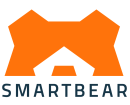Back in 2018, Tim Maguire of SmartBear was sitting at a table with customers at the SmartBear Connect conference in Boston when the introductory speaker kicked off the event by mentioning a pair of the company’s products, Swagger and SwaggerHub.
In that moment, a wave of shock and excitement swept over one of the customers that was sitting at Maguire’s table.
“I didn’t know SmartBear built SwaggerHub!” the customer exclaimed.
It’s not the first time someone didn’t make the connection.
The SmartBear open-source product, Swagger, and its free and commercial API design and documentation product, SwaggerHub, are household names in the software tech community. But the name SmartBear, the Boston-area tech company that’s behind it all — which offers products that support the entirety of the software development lifecycle, from test management, functional testing, monitoring and API management — doesn’t always ring a bell.
“Swagger really became so popular because it was a lightweight easy solution to a hairy problem many in the development community had,” Maguire, the SmartBear director of product management for SwaggerHub, said. “This community continued to build their own tooling on top of Swagger to solve their individual needs, and from there it grew exponentially.”
We spoke with Maguire to better understand how Swagger and SwaggerHub impact the tech community, and what’s on the horizon at SmartBear.

Maguire is responsible for all things SwaggerHub. That includes its overall strategic direction, the roadmap and its day-to-day tactical development.
Tell us more about SwaggerHub. What is it used for, and how long has it been around?
SwaggerHub is a commercial product that sits on top of the Swagger open-source tooling, allowing teams to collaborate on their API design and documentation. We just celebrated our 5-year anniversary in September. We take the functionality of the open-source Swagger tooling and wrap it in a collaboration platform that enables teams and enterprises to build and design APIs at scale. By working closely with the open-source team, we ensure SwaggerHub is built upon the same openness and standards of the OpenAPI Initiative and Swagger tooling.
Tell us more about Swagger. What is it used for, and how long has it been around?
As APIs started to become more popular, API providers needed a way to communicate and share their APIs with their consumers and partners. To accommodate that need, the Swagger project started in 2010 as a way to describe REST APIs and really took off because of the support from the open-source community around it. Tooling, such as Swagger Editor, Swagger UI and Swagger Codegen, fueled the adoption and formally standardized the way to describe and document APIs.
SmartBear purchased the Swagger project in 2015, donated it to the Linux Foundation and renamed it OpenAPI. The OpenAPI Initiative was created to guide the development of the OpenAPI Specification (OAS) in an open and transparent manner. SmartBear continues to maintain the open-source Swagger tooling and is the foundation of SwaggerHub.
What excites you the most about working at SmartBear, and in particular, about SwaggerHub and Swagger?
SmartBear builds tools to support the entire development lifecycle. I spent the early part of my career as a software engineer and engineering manager, and just the fact that I get to solve problems facing developers today excites me. I can easily put myself in our customers’ shoes, as many of their problems are problems I’ve come across in a previous role. I know that when looking for a tool to solve a problem, many developers start with something open-source for evaluation, and the Swagger tooling is there for them. As teams scale, SwaggerHub becomes the go-to tool of choice for API design because it’s something familiar.
I can easily put myself in our customers’ shoes, as many of their problems are problems I’ve come across in a previous role.’’
What project are you currently overseeing or working on?
Right now, people are looking for SwaggerHub to enhance their current development processes. They are building APIs today and are looking for SwaggerHub to augment and corral their APIs processes. This has led us to focus on how SwaggerHub can better integrate with their workflows and tools they currently have. We see the OpenAPI definition to be at the center of an organization’s API development and SwaggerHub enables those integrations and automates the API development workflow.
Our biggest challenge is the diversity of tools and processes from organization to organization — solving specific customer needs in the most generic way possible. A recent example of this is our SwaggerHub for VS Code extension. API designers can now leverage the SwaggerHub platform to build and edit their API definitions in a tool with which they are comfortable.
What’s on the horizon at SmartBear?
APIs continue to become more and more popular and I’m excited to be involved with that journey at SmartBear. We envision SwaggerHub to own an organization’s API development lifecycle, the single source of truth for all things APIs, even beyond REST APIs. Think AsyncAPI or GraphQL. SwaggerHub will be the destination to learn, design, develop, maintain and govern your API development process by capitalizing on our strong open-source software and community.









